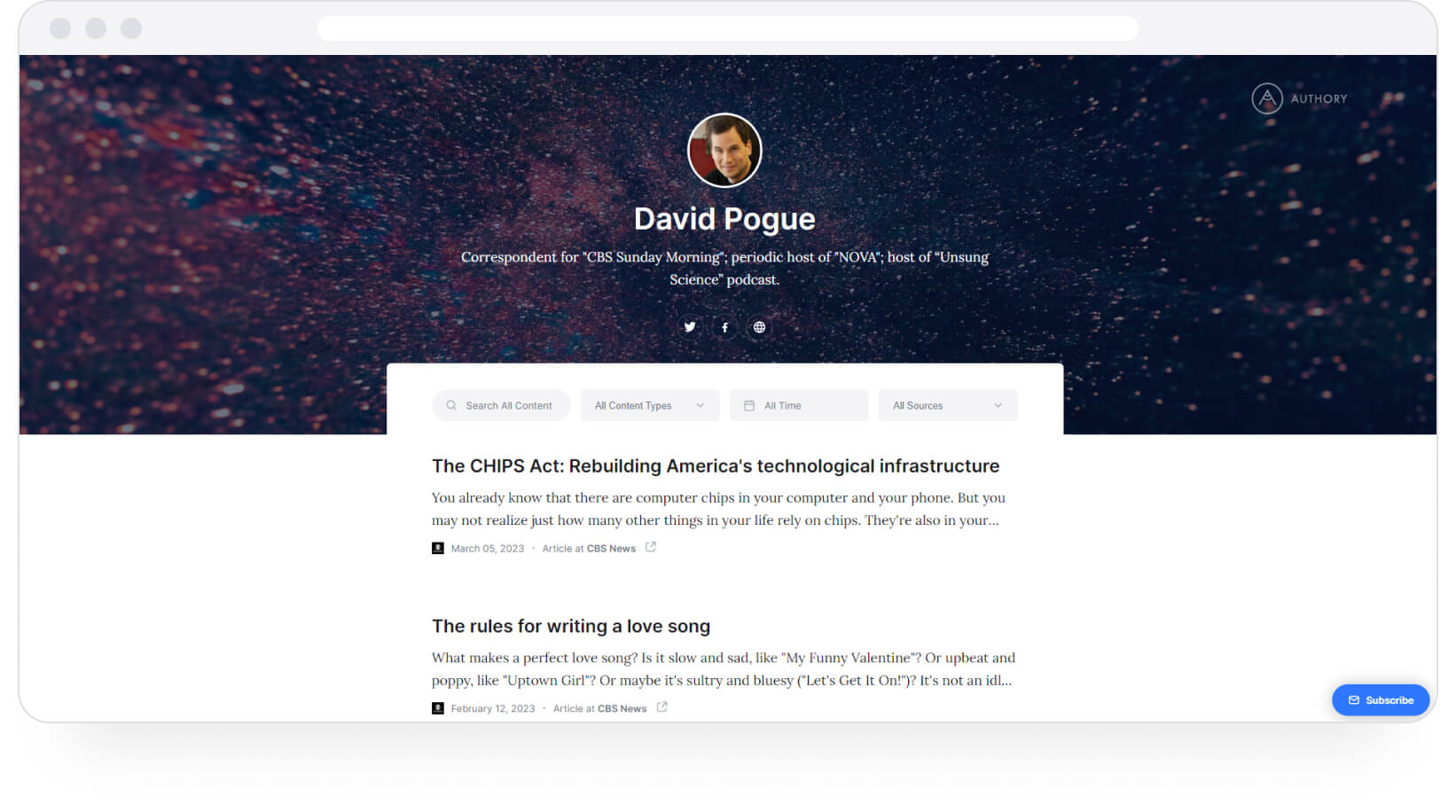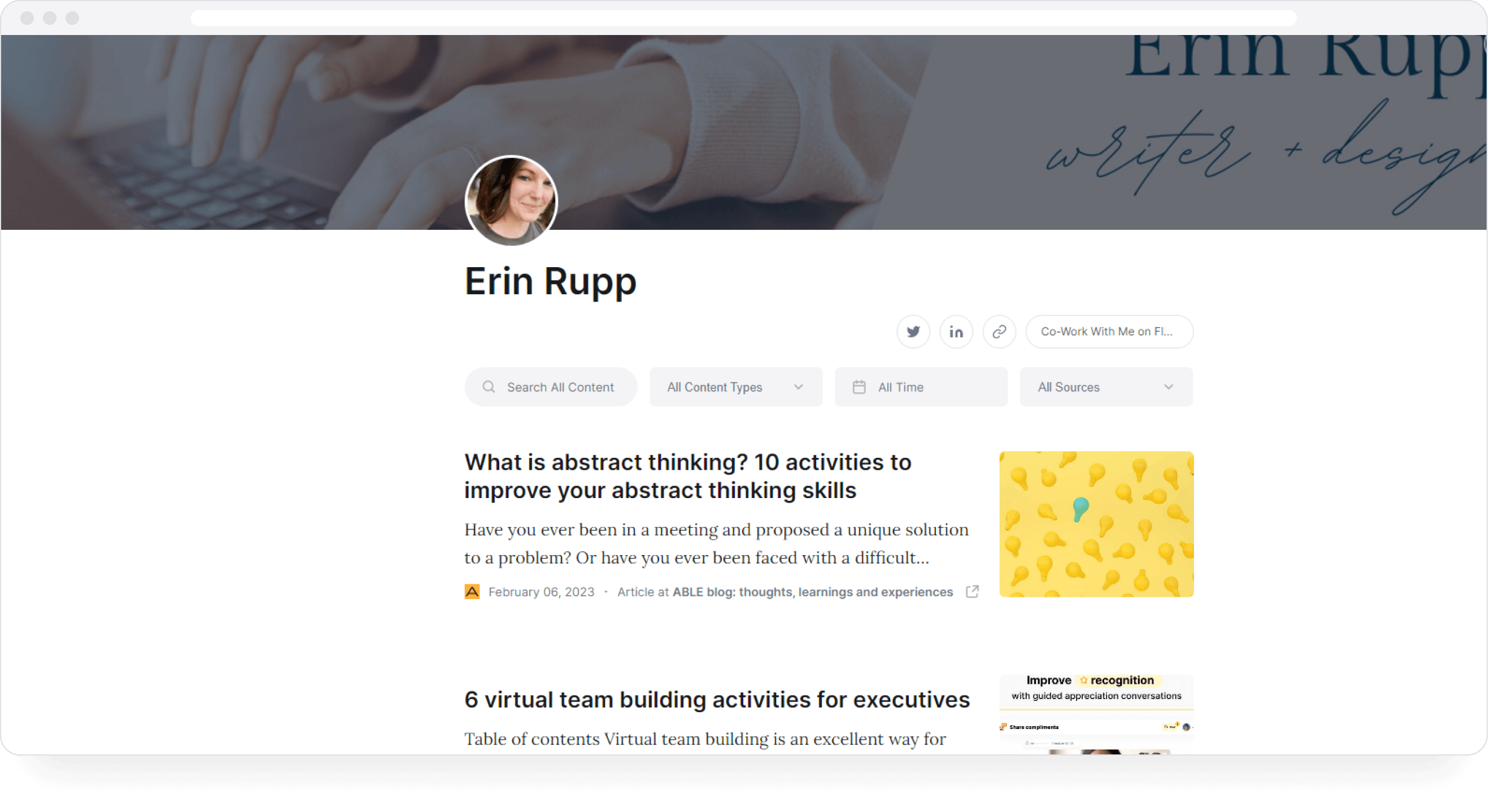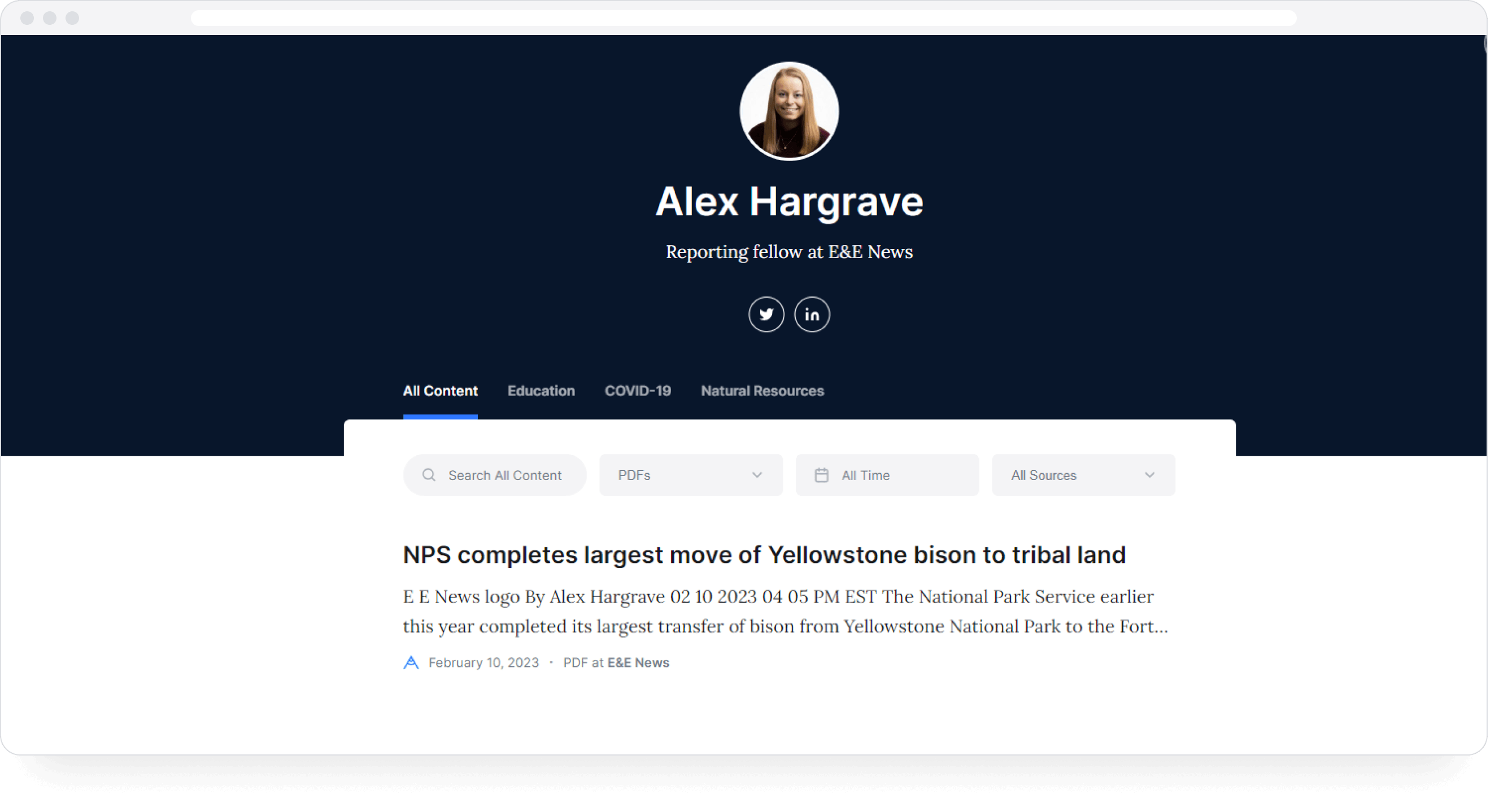Writers, I’m not going to pretend you don’t know that you need a portfolio. Unless you are literally starting out with your writing career (and you've been chilling under a rock so far), you know a writer is defined by their work... and a professional writer shows their work in their professional online portfolio.
But not every portfolio is equal. Some don't make the cut when potential clients are evaluating them, and their failure is only sometimes because the actual work in the portfolio is sub-par. Sometimes, the portfolio design, its non-navigability, or the lack of relevant information disqualifies the portfolio and its owner.
So, in this article, I'll detail the essential elements of an online writing portfolio that actually gets you hired. I'll also throw in some writing portfolio examples, and introduce you to a tool that lets you collate your writing samples into an industry-best portfolio website within minutes.
• Elements of an incredible writing portfolio
• Features of the ideal writing portfolio builder
• How to create a professional writing portfolio with very little effort (using Authory)
• Examples of standout writing portfolios
• Why you should give Authory a shot — imports all your work and saves it automatically
So, what should go into your writer's portfolio?
A succinct but comprehensive introduction
Keep things short, unless you're a winner of multiple major awards or you've studied in two different Ivy League schools. Otherwise, briefly mention what you do, who you've worked with, and any outstanding achievements (awards, Guinness Book Record for deep ocean diving, etc.).
If you're a freelance writer or you run a freelance writing business, you can include a line or two from a notable client testimonial.
ALL your work in ALL formats (text, audio, video)
This is the heart of all portfolio sites. If you're a writer or journalist, showcase your articles. If you're a photographer, display your best photos. If you're a graphic designer, exhibit videos, websites, animated elements, and still images you've worked on.
If you've produced content across different formats (text, audio, video), include all of it in your own portfolio. This is especially true if you have a creative writing portfolio. It indicates that you're comfortable working with multiple content avenues and makes you an asset for companies looking to expand their presence on numerous social channels.
A portfolio builder like Authory lets your import your work in different formats (text, audio, video, and social media posts).
Potential employers want to see writing portfolio sites showing off that you stay good at your job over time and aren't just a one-hit-wonder. The fact that you've written one great article a year isn't as great as writing one great article each month or week
Your digital portfolio should display this, and the best way to do so is to import ALL (or most) of your work in ALL formats — and display them accordingly on your portfolio.
Read More: Why your portfolio should include ALL your work in ALL formats (audio, video, text)
Real-world results
Nothing speaks like real-world results. Writing portfolios that showcase some real-world results are usually the ones that get more attention.
If you've got a few years of experience, you should have some numbers to indicate your competence. Have you written 50 articles in a year, perhaps? Have these articles driven organic traffic up 34% during that year? As a content marketer, have your skills driven greater engagement with a site or an even higher number of signups or purchases?
What to look for in your ideal portfolio builder
No matter what domain you work in, your portfolio page builder should come with the following essential elements:
1. Easy to set up & use
Writers need a portfolio builder that's super easy to set up and maintain because our focus needs to be on the actual writing. You cannot spend days copy-pasting links to your published work, and structuring headers, footers, section descriptions, and adjusting imagery for your portfolio.
For example, Authory’s setup process is exceptionally low-effort. All you do is enter the URLs of the sites on which your work is published, and Authory will find & import all your bylined content to its own database. That way, you have a complete repository of all the work you've ever done, at your fingertips.
2. Should look good
A portfolio showcases your best work, and it needs to look amazing. It also needs to load quickly, be searchable, navigable, and look great on any device, desktop or mobile.
You don't need award-winning designs gracing your portfolio, but your portfolio should be easy on the eyes and easy to look through.
Your portfolio should also look great on desktop and mobile screens, so pick a portfolio builder like Authory that automatically makes all portfolios responsive.
3. Should allow categorization
Typically, writers work for various organizations, publications, and clients. Since a prospective client is unlikely to go through work unrelated to their industry, it makes sense to share only what's relevant.
For example, let's look at Marijana's freelance writing portfolio: authory.com/MarijanaKostelac

Marijana is a content marketer who has written for different domains, all of which are on her portfolio. In order to showcase her work in some sort of order, she showcases them in different Collections: e-commerce, creator economy, email marketing, content marketing, and video marketing. She can share each of these Collections separately so that the client only sees what she has achieved within the relevant field.
4. Should support different content types
Creators produce content in many formats, and a good portfolio builder should be able to include all of them. Your portfolio should be able to flawlessly showcase content in text, audio, and video formats, as well as from different platforms like podcast sites, social media platforms (like LinkedIn and Twitter), etc.
5. Should be up-to-date
Keeping your portfolio up-to-date is extremely important, as recent work is usually the most relevant to your audience. As a writer, more often than not, my portfolio site is a little dated because I am more focused on my day-to-day rather than updating. But this oversight always impedes my ability to get more work as potential clients miss out on my latest pieces.
And that's why a self-updating portfolio — a portfolio that automatically updates itself with your new work — is a game-changer.
Authory, by default, offers you a self-updating portfolio. Once you add your sources (URLs of sites where your work was published), Authory automatically updates your portfolio whenever you publish on those sites again. So, anytime a new bylined piece shows up on any one of the sites you previously fed into the system, it'll show up in your Authory database (and you'll get an email notification notifying you every single time).
6. Should back up your content
Sites go down, files go missing. But, as writers, few things are as bad as losing our writing, published or unpublished. While a portfolio doesn't necessarily have to act as a backup tool, your professional life will be so much easier if it does.
Losing my work is something I've dealt with more than once, and I do not recommend the panic I felt every time I realized that work I've done for a client was taken down from their website. And... I hadn't backed it up.
Authory backs up your content automatically. Just add your sources, and anything Authory imports will be automatically backed up. The original site may go down, but you'll always have your copy on Authory.
How to efficiently create a portfolio with ALL your work (and very little effort)
Authory is a dedicated portfolio-building platform, which allows users to create a professional work portfolio in literally a few minutes. To create a portfolio with ALL your content (in different formats), follow the steps below:
- Sign up for Authory (for FREE) using this link.

Once I choose “Continue with Google” and enter my email ID, the tool automatically fills in the fields for my name (taken from my email data).

- I chose my profession as “Writer” and then click “Next Step.”

In the next screen, I see that Authory has already automatically found the “sources” — websites where my bylined articles are published (nytimes.com & washingtonpost.com, for example). Of course, if it has missed a source, I can add it manually (just the site URL), OR I can choose to add all my sources manually.
- Click “+ Add.”
Authory will take up to 48 hours (often less) to import every bylined article to its database. Once the process is complete, you can segment your articles, videos, podcasts, audio files, and social media posts into relevant “Collections” — think of them as folders within your Authory database.
Creating a Collection on Authory
Once all your work has been imported by Authory, go to the “Collections” tab on your Authory dashboard.

- Click “+Create Collection.” You’ll see that I already have a set of Collections in the mix.

- Add a name and description to your new Collection. Click “Add.”

- You’ll be taken inside your new Collection. Click “Go to Content” next to the “Manually” option.

- Once you click “Go to Content,” you’ll be taken back to your main content dashboard. Since Authory has already imported your pieces, you can select the ones you want to slot into this particular Collection.

- Select the relevant files (articles in my case), click “+ Add to collection” to the bottom right (highlighted above), find the name of the Collection you created, and click on it.
- Go back to the “Collection” tab you clicked before on the dashboard. You’ll see your new Collection.

Adding your Collection to your Authory portfolio
- Now that you’re done creating a Collection(s), it’s time to add it to your portfolio. Go to the “Portfolio” option on your dashboard.

- Click the “Content” drop-down to the left. Click “Add collection.”

- Choose the Collection you just created — “New Collection,” in my case.

- And voila! Your new collection has been added to your portfolio.

- To check the final product, click “Go to portfolio” on the left.

- You’ll be taken to your portfolio in a separate window. This is what clients will see when you send them your Authory portfolio.

If you’d like to explore this example portfolio, feel free to do so: https://authory.com/shreya-bose
Writing portfolio examples that deserve your attention
David Pogue

David Pogue is a six-time Emmy winner, a New York Times bestselling author, and a five-time TED speaker. He is also a correspondent for "CBS Sunday Morning", a periodic host of "NOVA"; as well as the host of the “Unsung Science” podcast.”
Erin Rupp

Erin Rupp writes about productivity, well-being, and self-development. Her work stands out because of her depth of research, as well as insights from her own experiences.
Alex Hargrave

Alex Hargrave is a Reporting fellow at E&E News. Her portfolio page showcases a number of impressive writing samples (some of them in PDF).
Mary Ann Gwinn

Mary Ann Gwinn is a Pulitzer Prize-winning journalist and book reviewer for the Los Angeles Times, Minneapolis Star Tribune, Seattle Times, Kirkus Reviews, and other publications. She is also a Pulitzer jurist.
Why use Authory over other portfolio builders?
As demonstrated above, Authory doesn’t just give you the space to copy-paste links and assemble a digital portfolio. It literally does over half the work: finding all bylined content you’ve ever published, importing it automatically, saving it permanently (again, automatically), and enabling you to organize your pieces into different collections.
A self-updating portfolio (no need to keep adding new work manually)
Authory will AUTOMATICALLY import a copy of every bylined piece from every site into its own database.
These sites are called "sources." You add as many sources as you want, and every single bylined piece from every single source will be imported automatically.
You don't have to track down links to your published work (especially older pieces). As long as you remember the URL of the site where your work exists, Authory will collate all your content for you in one dashboard.
Authory can import content from behind most soft paywalls (as long as it is a bylined piece) and some hard paywalls. However, it cannot be used to import copies of articles, podcasts, and videos you haven’t created or featured in.
There isn’t any need to manually upload/copy-paste your content. That said, if you happen to have any non-bylined content, you can always do so manually in those cases.
Automated backups (never lose your content, ever)
All the content that Authory imports from different sources is saved permanently. You'll never have to worry about losing any of your published work. Even if the original website where it's published goes defunct for any reason, you'll always have a copy safely stored on Authory's server.
All backups are in the original format — text and/or media. No screenshots. This is super important because it lets you search through your content database, making it a valuable research tool.
Continued importing of past and future content (less effort for a 100% updated portfolio)
Once you enter a source, Authory won't just import your existing publications. Anything you publish on the same site (after you've fed its URL into Authory) in the future will also be imported automatically. In other words, Authory will import your past and future content.
Authory also sends email notifications for every new piece it imports, so you'll always know if something you submitted has been published.
Many Authory customers have also observed that Authory notifications reached their inboxes faster than Google Alerts.
Apart from these, you also get a slew of miscellaneous but necessary features:
- Ability to search through both your portfolio and your content database to find articles/audio/videos based on keywords. Prospective employers and hiring managers can use this to look for topics on your portfolio, and you can use it to find specific pieces within your Authory content bank.
- Ability to create a custom domain with a click.
- All imported content can be downloaded as high-res PDFs or exportable as HTML files — no lock-in period.
- Get a custom domain and personalize your portfolio even further.
- Multiple, low-effort options for customization to make your portfolio visually appealing and easy to navigate.
- In-built analytics that provides real numbers on content performance (engagement, readership) across the web and popular social media sites every 30 days. You get to see how your readers/viewers are responding to your work.
- Allows creation of newsletters with a couple of clicks. After setup, Authory will automatically send your newly published content to subscribers.
- Widgets to display your personal portfolio on other sites, such as your personal website (if you have one).
Authory has been chosen by quite a few well-known names in my domain, people who could have picked any tool in the world, but decided that Authory best met their needs. There's 6-time Emmy award winner David Pogue, Steven Levy, Editor at Large, WIRED, and Brian Fung, a Technology Reporter at CNN, to name a very few.
Get started with Authory for free and see for yourself what works for you!




